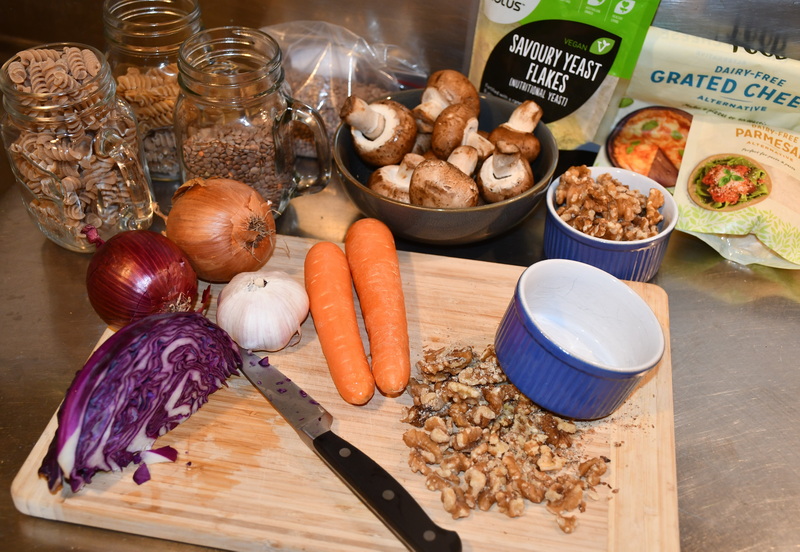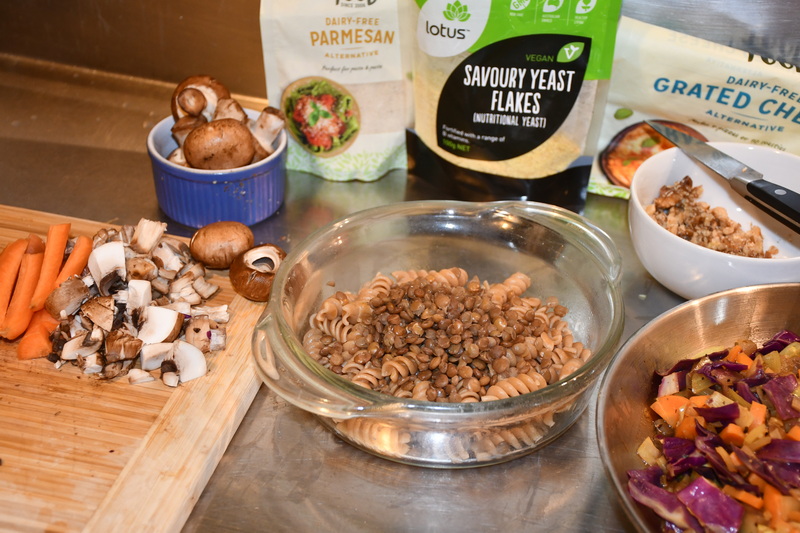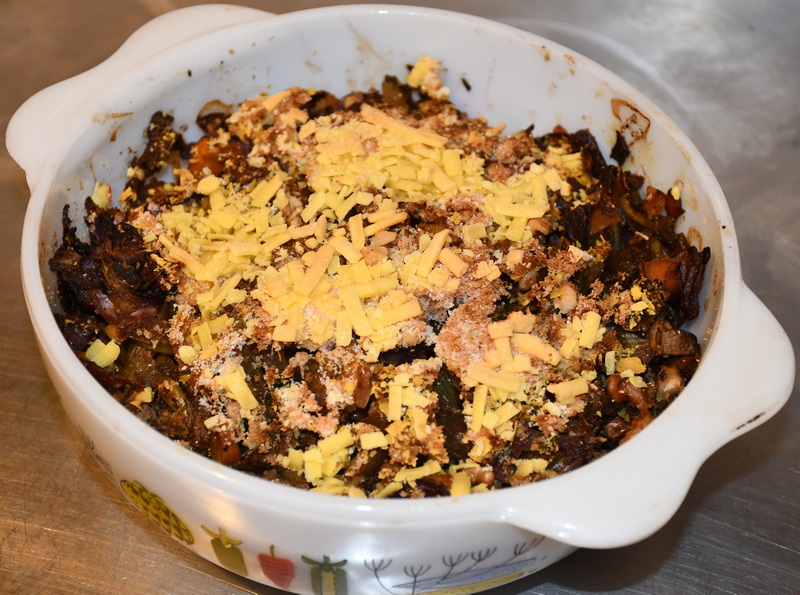Creamy Mushroom Power Pasta
By Julian Warmington
Does comfort food have to cost us our health? [1] What’s the most important similarity between those two classic comfort food dishes: macaroni and cheese, and lasagne?
If the baking of pasta is the key common ingredient, how could we do this to retain all the most satisfying taste and texture, but without the greasy, blood-vessel clogging, artery-blocking cholesterol within animal fat-based foods?
After considering, contemplating, minor meditation and then some strict and rigorous research, I’m pleased to present this thick and creamy mushroom-rich pasta. It is probably the most deeply satisfying dish ever created since that choco chip cookie crumble over triple chocolate ice cream with choco sauce.
Unlike that particular dish though, I can’t figure out the most important active ingredient in this one:
Is it really the creamy mushrooms, or is it actually the texture of the walnuts, the protein of the lentils, or the secret-ish mix of herbs and spices? If you try it out and figure it out, please share your findings in a letter to the editor.

Ingredients – to make four large servings
Whole-grain pasta twists: four large handsful
Mushrooms: two large handsful
Walnuts: one large handful
Red or brown lentils: two large handsful
Split peas or small beans: one large handful
Onion: one, large
Garlic & ginger: to taste
Black pepper, turmeric, red pepper, thyme, garam masala
Nutritional yeast, vegan cheese, parmesan flavor if possible
Soy sauce if vegan parmesan cheese not available
Soy milk
Any vegetables still hiding near the back of your fridge: Diced carrot is great for a crunchy texture; zucchini is brilliant for a chewier texture and more succulent flavor; a small tomato or two are okay, but this is a mushroom-based dish – not a tomato takeover!
Preparation
If you’re using brown lentils, they take a little longer to cook, so put them on to boil first and then simmer on a low heat.
Put the pasta in a pot with boiling water and a lid. It needs no more heat: It’ll finish cooking in the oven soon enough.
If you’re using red lentils, add them to the dried peas or beans and put them in a separate pot, but treat them the same as the pasta: Cover them in boiling water and put a lid on immediately, then leave them to soak in the hot water.
Dice the onion, garlic, and ginger. Put them in a pan to sauté in a very little of your favorite vegetable oil, and as they start to heat up, add in the herbs and spices to flavor. If you like a hot, peppery flavor, add more black and red pepper. Then turn down the heat on the pan and turn on the oven to 175 degrees Celsius, with a fan option if available.
Dice the mushrooms and other vegetables and add them to the mix in the pan just for a very short while; let them finish cooking in the oven soon.
If you’re not adding tomatoes or something with a lot of juice, perhaps add a little soy sauce if you like a stronger salty flavor, or soy milk for a heartier texture and flavor to match, but the main purpose of adding somein is mostly to stop the mixture from sticking to the bottom of the pan.
Tip out any excess water from the pasta, and tip the pasta itself into your baking dish. Pour the sauteed veggie mix on top of the pasta.
Tip out excess water from the lentils and spread them evenly across the top of the vegetable mixture.
Put the walnuts on a chopping block and, with the flat or side part of a sturdy mug or cup, crush them into a rough mixture of different-sized pieces. A few larger-sized chunks are great to add variety and more texture. Spread them around on top of the food already in the baking tray.
Spread the nutritional yeast and vegan cheese across the top of the dish last, and then slide it on into the oven for 20 to 30 minutes, keeping an eye on the top of the dish after 15 minutes or so. When it’s deep golden brown on top, it’s ready to share, or gobble as much as you can enjoy!



The Author
Julian Warmington taught for twenty years at the university level in South Korea, half of which he spent in Gwangju. He has been cooking fine plant-based cuisine for three decades, races in triathlons in his spare time, and misses duinjun guk in winter and a traditional vegan pudbingsu in summer.






